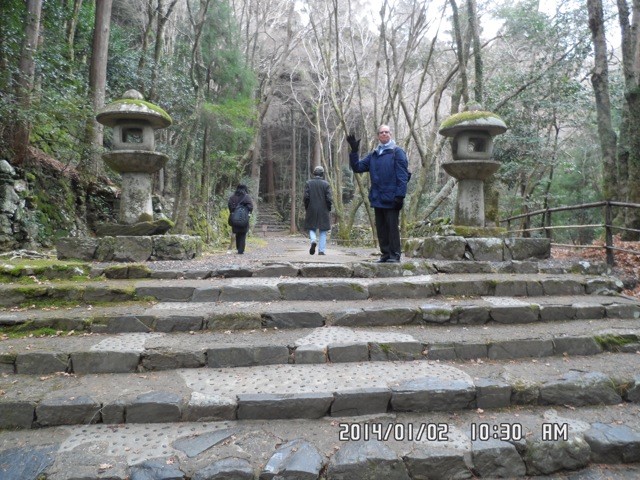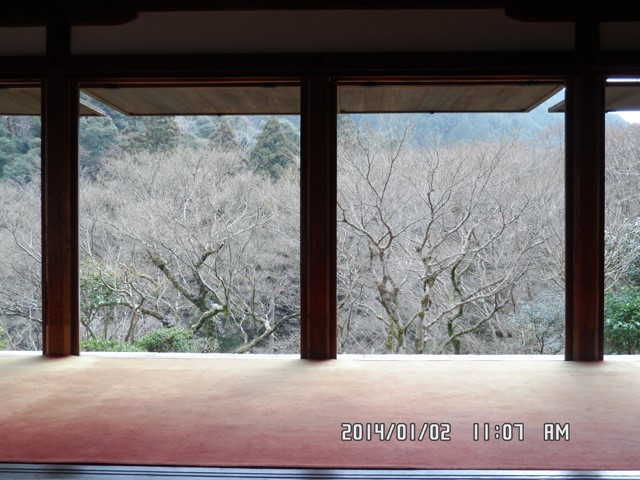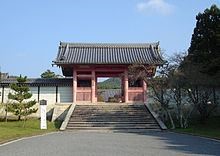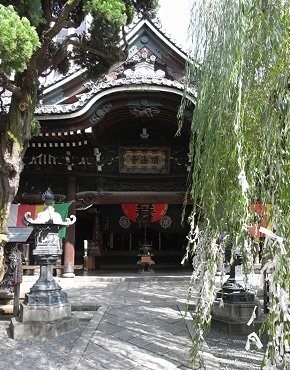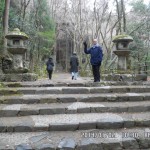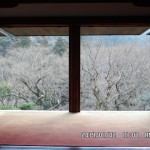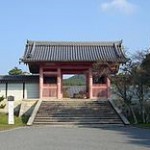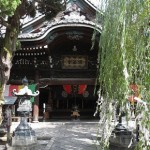Kyoto's Quiet Temples: Myoshinji Zen Temple, Ninnaji Temple, Kozanji Temple & Nishiki Food Market
SWA029
In this tour, you visit authentic temples in the quiet area away from the center of Kyoto that is getting more and more crowded and noisy because of the increase of number of tourists.
WHAT YOU CAN EXPECT
Buddhist temples should be a place you sit and meditate, seeking for the total serenity of mind which is the goal of Buddhism. This is a tour for those who seek quiet and serene Buddhist temples, unlike some touristy Buddhist temples in Kyoto. If you want to sit in meditation (do “zazen”), you can join an English-speaking “zazen” course held at a subtemple in Miyoshin-ji Temple with a chair available. You’re to visit the north-western suburbs of Kyoto. Among the temples you’re to visit, Ninna-ji and Kozan-ji are designated as a World Cultural Heritage site.
ITINERARY
Your hotel→ Myoshin-ji Temple→Ninna-ji temple(Lunch Time)→(Fuku-oji Shrine)→Kozan-ji Temple →Saimyo-ji Temple→Rokkakudo Hall→Nishiki Market
- More Info
-
◆Myoshin-ji Temple
A big Zen Buddhist temple in the western suburb of Kyoto. It was built where the detached palace of Emperor Hanazono used to be. It has as many as 3500 branch temples in Japan. Inside the precinct, there’re 38 of them with only 3 of them, Taizo-in, Daishin-in and Keishun-in, always open to the public. The precinct looks like a posh town in the 17th Century or the 18th Century with continuing gorgeous white earthen walls. There’s a sub temple where “zazen” class is held in English every morning.◆Ninna-ji Temple
An old Buddhist temple founded at the end of the the 9th Century. In the precinct, Emperor Uda built a palace called “Omuro” and lived there, after he became a Buddhist monk, being the incumbent emperor. So this temple used to be called “Omuro Palace.” The head priest often came from the Imperial family. Now there’s a palace-like building where Omuro Palace used to be. It’s famous for “Omuro Zakura,” a cherry which blooms late, and it will be crowded around the blooming season.◆Fuku-oji Shrine
It is the Shinto shrine giving protection to Nin-na-ji Buddhist temple. It enshrines Hanshi Empress, the mother of Emperor Uda. There used to be a different Shinto shrine which was burnt down in the Oh-nin War in the 15th Century, and during the reign of Tokugawa Iemitsu(at the first half of the 17th Century) , it was rebuilt, enshrining Hanshi Empress, whose burial ground was close-by. The name, meaning good luck, comes from the fact that she successfully gave birth to many children.◆Kozan-ji Temple
An old Buddhist temple in Togano-oh, a distant suburb of Kyoto. From the main building called “Sekisui-en,” you can enjoy the view which might make you feel as if you’re deep in the mountains. The temple, originating from the 8th Century, was reenergized in 1206 by Myo-eh, an excellent monk. He was donated a building by Emperor Go-toba. It has “Cho-ju Jimbutsu Giga,” superb and witty picture scrolls called “the first comic of Japan”, and has the first tea garden in Japan as Ei-sai, a monk who brought tea seeds from China for the first time in Japan, gave them to Myo-eh. It’s crowded with visitors in the autumnal foliage season.◆Saimyo-ji Temple
An old Buddhist temple in Makino-oh, a distant suburb of Kyoto. You cross a bridge over a river with pure water and go into the serene and beautiful precinct worth visiting. It’s crowded with visitors in the autumnal foliage season.◆Rokkaku-do Hal
A small Buddhist temple just in the center of Kyoto City (It has a “belly button stone” in the precinct!). A legend has it that it was built by Prince Shotoku, a renowned figure around 600 AD. The name meaning hexagon comes from the fact that the main building is hexagonal viewed from the top. It was burnt down as many as 16 times from the early 12th Century to the middle 19th Century according to the records. The present building was built in 1877. It’s home to Ikenobo, the flower arrangement school founded by the monks of this temple.◆Nishiki Market
If you need a break from temple hopping, Nishiki Market is a great place to visit. Located in the center of the town, Nishikikoji-dori, 400 meters long, is a street lined with around 130 shops selling Kyoto's specialties, such as Kyoto vegetables, dried and pickled foods, fish, and more. That's why it is called "the kitchen of Kyoto". The variety of foods on display is staggering and the frequent cries of Irashaimase (Welcome!) are heart-warming.
CANCELLATION POLICY
(1) 14-3 days before the program day: 20 % of the program fee
(2) 2 days before the program day: 50 % of the program fee
(3) one day before, on the departure day, or cancellation without notice: 100 % of the program fee
PROGRAM FEE
- Basic Fee (Per Group)
- 14,500JPY
- Fee per Person
- 10,500JPY
- Age 6 - 11
- 6,300 JPY
Total Price = Basic Fee + Fee per Person * Number of Participants + Tax
- STARTING TIME
- 9:00~
- DURATION
- 8 hours
- LOCATION
-
Myoshin-ji Temple
Ninna-ji temple
(Fuku-oji Shrine)
Kozan-ji Temple
Saimyo-ji Temple
Rokkakudo Hall
Nishiki Market
- INCLUSIONS
Guiding fee, Public transportation fee (For taxis or hired cars, additional fee will be charged.), Admission fee
- EXCLUSIONS
Cost of meal and sightseeing activities
- NOTIFICATIONS
◆Please follow the guide's instruction during the program. We shall not be responsible for any accident caused by disregard of the instructions.
◆Please advise us if you have any religious or health restrictions, allergies, or the case where you would like to request a special care for participants, including children. Please email us at info@truejapantours.com to check an availability and share the information.
Please note that any programs booked without an inquiry will not be guaranteed.
◆Our services are mainly offered in English. In addition, services in other languages, such as Chinese, French, Spanish, German, Italian, Russian are also available. In case you would like services in languages other than English, please inquire us at info@truejapantours.com as soon as possible. We will check the availability.
◆Our business hours are from 9:00 am to 6:00 pm on weekdays. For inquiries received outside the business hours, we will look into it and respond on the next business day.
will check an availability.
◆Deadline for booking of this program is 10:00 am of 3 business days (JST) prior to the program date except for the peak season described in the note below.
When booking the programs held during the peak season and after the deadline, please be sure to email us at info@truejapantours.com to confirm an availability.
Please note that any programs to be held during the peak season and booked after the deadline without a prior confirmation may not be guaranteed.
*Note : Peak season is from March 20th to April 30th.
Stocker
BOOKMARKS
- Not available.


